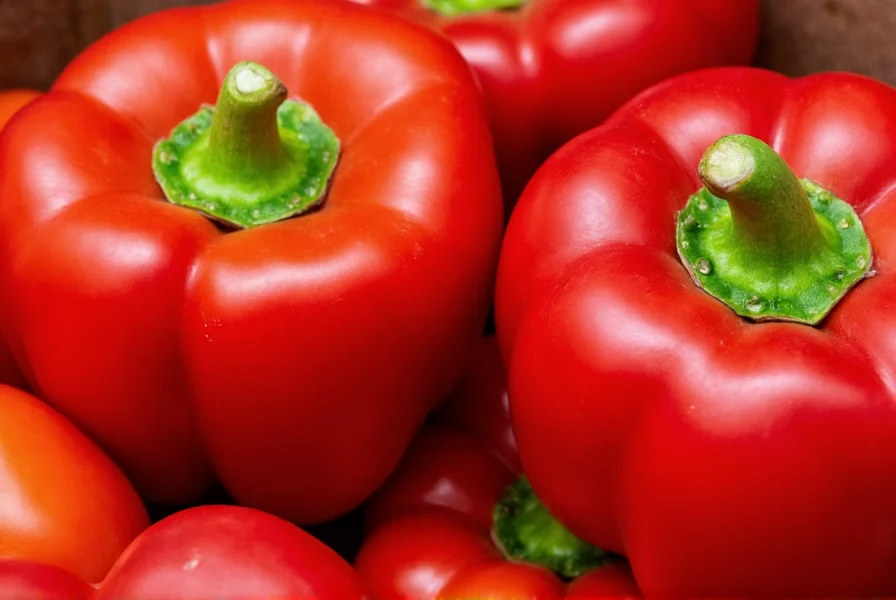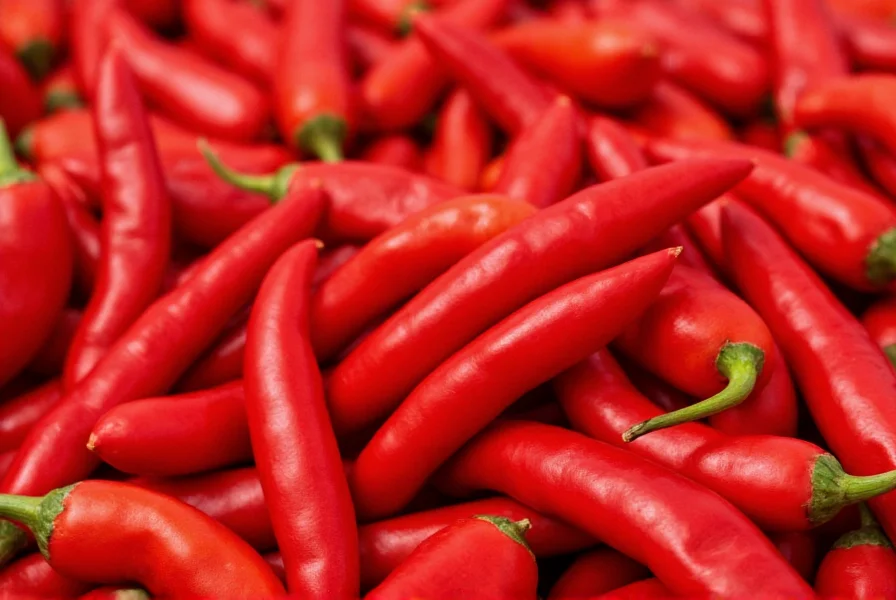When evaluating vitamin C sources, red bell peppers consistently outperform citrus fruits in nutritional density. A 100-gram serving of raw red pepper delivers 128mg of vitamin C, compared to just 53mg in the same amount of orange. This significant difference stems from the ripening process—as green peppers mature to red, their vitamin C content increases substantially while developing sweeter flavors and additional antioxidants like beta-carotene.
Nutritional Profile of Red Peppers
Red bell peppers undergo a remarkable transformation as they ripen from green to red, significantly boosting their nutritional value. The extended time on the vine allows for greater development of vitamin C and other beneficial compounds. Unlike many nutrients that degrade during cooking, vitamin C in red peppers remains relatively stable when prepared using appropriate methods.
| Food Source | Vitamin C (per 100g) | Daily Value % | Additional Key Nutrients |
|---|---|---|---|
| Raw Red Bell Pepper | 128mg | 142% | Vitamin A, Vitamin B6, Folate, Potassium |
| Raw Orange | 53mg | 59% | Fiber, Calcium, Potassium, Folate |
| Raw Green Bell Pepper | 80mg | 89% | Vitamin K, Folate, Manganese |
| Raw Yellow Bell Pepper | 137mg | 152% | Vitamin A, Vitamin B6, Folate |
This nutritional comparison reveals that both red and yellow bell peppers contain higher vitamin C concentrations than their green counterparts and citrus fruits. The vitamin c content in red bell peppers makes them particularly valuable for immune support, collagen production, and antioxidant protection. Understanding the vitamin c levels in different pepper varieties helps consumers make informed dietary choices for optimal health benefits.
Vitamin C: Essential Functions and Requirements
Vitamin C serves multiple critical functions in the human body beyond its well-known role in immune support. As a powerful antioxidant, it protects cells from free radical damage, aids in collagen synthesis for skin and connective tissue health, enhances iron absorption from plant-based foods, and supports neurotransmitter production. The recommended daily allowance (RDA) for vitamin C is 90mg for adult men and 75mg for adult women, with smokers requiring an additional 35mg due to increased oxidative stress.
Regular consumption of vitamin c rich foods like red peppers provides sustained benefits that processed supplements often cannot match. The natural matrix of vitamins, minerals, and phytonutrients in whole foods enhances bioavailability and creates synergistic health effects. For those seeking natural ways to boost their vitamin c intake without supplements, incorporating red peppers into daily meals represents an exceptionally effective strategy.

Maximizing Vitamin C Retention in Red Peppers
To preserve the maximum vitamin c content when preparing red peppers, follow these evidence-based recommendations:
- Consume raw when possible – Raw red peppers retain 100% of their vitamin C, while cooking methods affect retention differently
- Choose gentle cooking methods – Steaming preserves more vitamin C than boiling, with just 10-15% loss compared to 30-40% in boiling
- Minimize cooking time – Shorter exposure to heat preserves more nutrients; stir-frying for 3-5 minutes maintains approximately 85% of vitamin C
- Avoid alkaline environments – Baking soda or other alkaline substances accelerate vitamin C degradation
- Store properly – Keep whole peppers in the refrigerator crisper drawer for up to 2 weeks; cut peppers lose vitamin C more rapidly
The relationship between red pepper vitamin c preservation and cooking methods demonstrates why raw consumption provides the highest nutrient yield. However, even with some nutrient loss during cooking, red peppers remain an exceptional source compared to many other vegetables and fruits. Understanding how cooking affects vitamin c in red peppers helps consumers balance culinary preferences with nutritional goals.
Red Peppers in a Balanced Diet
Incorporating red peppers into your diet offers benefits beyond their impressive vitamin C content. Their vibrant color indicates high concentrations of carotenoids, which convert to vitamin A in the body. The combination of vitamin C and vitamin A creates a powerful antioxidant synergy that supports immune function, skin health, and vision. Unlike citrus fruits which primarily offer vitamin C and some folate, red peppers provide a broader spectrum of essential nutrients.
For optimal vitamin c absorption from red peppers, pair them with iron-rich plant foods like spinach or lentils. The vitamin C significantly enhances non-heme iron absorption, potentially increasing it by up to 300%. This makes red pepper salads with leafy greens an exceptionally nutritious combination, particularly for vegetarians and vegans who rely on plant-based iron sources.

Practical Applications for Daily Nutrition
Integrating red peppers into your daily meals doesn't require complicated recipes. Add sliced raw red peppers to sandwiches and wraps for crunch and nutrition. Include them in morning omelets or frittatas for a vitamin C boost with breakfast. Create vibrant stir-fries using minimal cooking time to preserve nutrients while enhancing flavor. Stuff whole peppers with quinoa, beans, and vegetables for a complete, nutrient-dense meal.
For those monitoring their vitamin c intake for specific health goals, understanding the exact vitamin c levels in red peppers helps with precise dietary planning. One medium pepper provides sufficient vitamin C to meet daily requirements with substantial surplus, making it an efficient choice for those seeking natural ways to boost their immune system through diet rather than supplements.
How much vitamin C is in a red bell pepper compared to an orange?
A medium red bell pepper contains approximately 152mg of vitamin C, while a medium orange contains about 70mg. This means red peppers contain more than double the vitamin C of oranges by weight. Per 100 grams, red peppers provide 128mg of vitamin C compared to 53mg in oranges.
Does cooking red peppers destroy their vitamin C content?
Cooking does reduce vitamin C content in red peppers, but the extent depends on the method. Raw red peppers contain the maximum amount. Steaming causes minimal loss (10-15%), while boiling can reduce content by 30-40%. Stir-frying for short periods preserves about 85% of the vitamin C. To maximize retention, consume red peppers raw or use gentle cooking methods for brief durations.
Are red peppers a better source of vitamin C than green peppers?
Yes, red peppers contain significantly more vitamin C than green peppers. As peppers ripen from green to red, their vitamin C content increases. A 100g serving of red pepper contains 128mg of vitamin C compared to 80mg in green peppers. Red peppers also develop higher levels of beta-carotene and other antioxidants during the ripening process, making them nutritionally superior to their unripe counterparts.
Can red peppers provide enough vitamin C to prevent deficiency?
Absolutely. One medium red bell pepper provides approximately 152mg of vitamin C, which exceeds the recommended daily allowance (90mg for men, 75mg for women) by 69-103%. Regular consumption of red peppers as part of a balanced diet effectively prevents vitamin C deficiency and supports optimal immune function, collagen production, and antioxidant protection without requiring supplements.
What's the best way to store red peppers to preserve vitamin C?
Store whole red peppers in the refrigerator's crisper drawer at 45°F (7°C) with high humidity. Properly stored, they maintain vitamin C content for 1-2 weeks. Once cut, peppers lose vitamin C more rapidly—use cut peppers within 2-3 days. Avoid washing peppers before storage as excess moisture accelerates nutrient degradation. Never store peppers at room temperature for extended periods, as this accelerates vitamin C loss.











 浙公网安备
33010002000092号
浙公网安备
33010002000092号 浙B2-20120091-4
浙B2-20120091-4